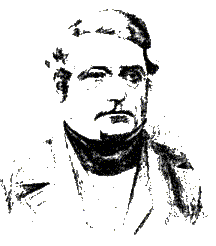
A Brief History
Born at Gainsborough, Lincolnshire in 1802 he was apprenticed to the whaling trade at an early age, working his way from half-deck boy to captain in a career lasting nearly fifty years. Gravill was loose-harpooner aboard the Abram, mate of the Eagle in 1833 and held the same position in the old Harmony two years later. It was during the 1835 season that he first had the experience of being beset when the Harmony was trapped in Baffin Bay along with the Abram, Norfolk, Lady Jane, Grenville Bay and Dordon. There were a number of men on board from ships that had already been crushed in the ice and the complement of sixty four were put on short rations.
By tremendous exertions, incessantly warping and tracking, they fortunately succeeded in gaining the open water on the 28th November and arrived in the Orkneys on the 2nd January 1836. Other ships were not so lucky, five vessels were lost and the Lady Jane with twenty two dead did not reach Stromness until the 6th June.
As master of the William Ward in 1849 he was wrecked between Jan Mayen and Iceland when the ships timbers were holed by pack ice. After five days trying to keep afloat by constant pumping the exhausted frost-bitten crew were rescued by Captain Kerr of the Dundee whaler Fairy.
In 1857 Gravill was put in command of the Diana, then newly fitted with an auxiliary engine, and whilst at the sealing grounds he was able to rescue his son who was master of the Sarah and Elizabeth. The forty three year old whaler had her quarters stove in and the men managed to walk eight miles across the treacherously soft and rotten ice to where the Diana was dodging off the edge of the pack.
After a long and eventful career John Gravill died in his cabin aboard the Diana, the 26th December 1866, in his sixty fourth year. His body was brought back to Hull and on the afternoon of Monday the 29th April 1867 thousands of mourners lined the route as the hearse carrying his remains proceeded from his home in Mount Place to the final resting place in the Hull General Cemetery, Spring Bank. Some of the crew of the Diana, his faithful harpooners, acted as pall bearers and the service was read by the Rev. G. O. Bate of the Wesleyan Methodist Chapel, Great Thornton Street, where Gravill had been a devout member of the congregation. Two years later a fine monument paid for by public subscription was erected over his grave. It was executed in Sicilian marble by Mr. Keyworth of Savile Street with a carving on one face of the Diana beset in the ice.
John Gravill Jnr. continued in the whaling trade and sailed with the Dundee fleet until his death on the 13th November 1882 aged fifty one.
On the 8th May, 1867 J. Coleman, manager of the Theatre Royal, gave the proceeds of a performance of Dion Boucicaults "Colleen Bawn" to aid the survivors of the crew of the Diana and the widows and orphans of those who had perished.
from "The Diana of Hull" by Arthur G. Credland, Kingston-upon-Hull Museum